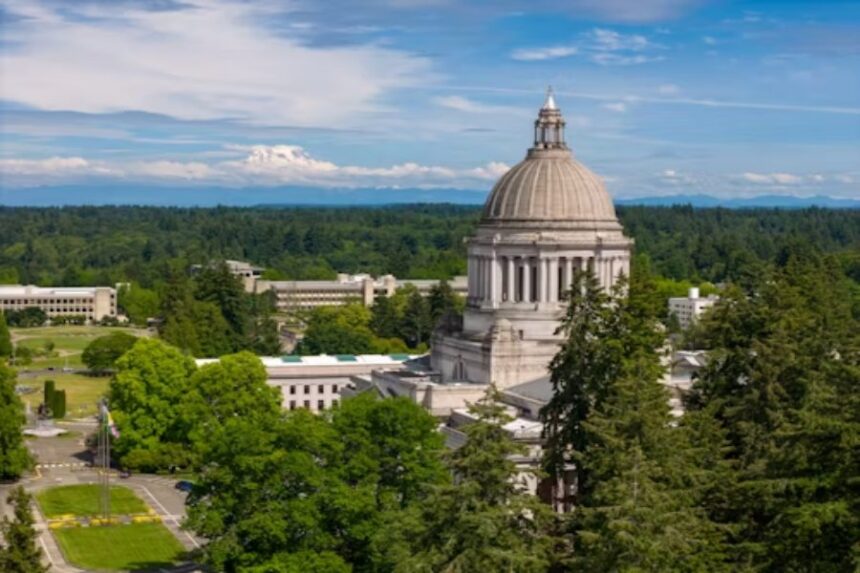When people wonder, How did Washington State get its name?, the answer often comes as a surprise. Unlike many U.S. states named after Native American terms, geographical landmarks, or European figures, Washington is uniquely named after a U.S. president—George Washington. However, the story behind this name goes far beyond a mere tribute. It reflects political strategy, territorial restructuring, and the shaping of a regional identity that would come to define the Pacific Northwest.
This article uncovers the whole journey of how Washington earned its name. From its early days as part of the Oregon Territory to nearly being called “Columbia,” the path to becoming Washington was filled with debates, legislative action, and symbolism. The decision wasn’t made lightly—it carried weight in national politics and regional pride. By understanding how Washington State got its name, we gain insight into 19th-century American governance and the cultural value placed on naming states. Whether you’re a history enthusiast or simply curious about the backstory of U.S. state names, this tale offers a captivating look into America’s evolving landscape.
How did Washington State get its name?
Washington State was named in honor of George Washington. It became an official U.S. territory in 1853 and was later admitted as a state in 1889. The name was chosen to honor the first U.S. president, despite initial proposals for alternative names, such as Columbia.
The Origins of Washington State’s Name
Washington State holds the unique distinction of being the only U.S. state named after a president—George Washington. Unlike most states, which draw their names from Native American languages, natural features, or European royalty, Washington’s name was a deliberate and symbolic choice meant to evoke patriotism, unity, and respect for the nation’s founding principles. The area that would eventually become Washington State was originally part of the expansive Oregon Territory. As American settlers expanded northward in the mid-19th century, the need for a separate territorial identity grew stronger.
In 1853, when Congress proposed creating a new territory from northern Oregon, the first proposed name was “Columbia,” about the Columbia River. However, concerns quickly arose that the name would be confused with the District of Columbia, the nation’s capital. To avoid this confusion, lawmakers ultimately decided on “Washington,” despite some hesitation from members of Congress who felt it might be too bold to name a state after a revered figure like George Washington.
Nevertheless, the name was embraced by settlers and politicians alike. By the time Washington achieved statehood in 1889, the name had become an established part of the region’s identity. It reflected democratic ideals, national pride, and the importance of unique names for states that carry both symbolic and historical weight, making Washington a lasting tribute to the country’s first president.
Why Was Washington Named After George Washington?
The decision to name Washington State after George Washington wasn’t made lightly. It reflected a blend of honor, symbolism, practicality, and political support.
A Tribute to Leadership
The decision to name the territory after George Washington was primarily a tribute to his leadership as the first president of the United States. Revered as the father of the nation, Washington symbolized the values of integrity, courage, and democratic vision. Naming the territory in his honor served as a way to immortalize those ideals in the fabric of a newly forming region.
Avoiding Confusion with the District of Columbia
Initially, lawmakers proposed the name “Columbia” for the new territory, referencing the Columbia River, a significant landmark in the region. However, concerns quickly surfaced that the name could easily be confused with the District of Columbia, the seat of the federal government. To prevent administrative and geographic confusion, the idea was set aside in favor of a more distinctive alternative.
Symbolism of Unity and Federal Allegiance
The name Washington was also symbolic. During a time of national growth and territorial expansion, choosing the name of the nation’s founding leader sent a message of unity and allegiance to the federal government. It helped establish a patriotic identity for the new territory and aligned it with the broader ideals of the United States.
Public and Legislative Support
Public sentiment strongly supported naming the territory after George Washington. Early settlers and influential leaders viewed the name as both honorable and fitting. In 1853, the U.S. Congress formally approved the name, cementing Washington’s legacy not only in national history but in the geographic identity of the Pacific Northwest.
Major Milestones in How Washington State Got Its Name
The journey behind Washington State’s name wasn’t a simple one—it unfolded through a series of pivotal events and decisions that helped define its identity. From early proposals to congressional actions, each milestone contributed to the final choice. Here’s a breakdown of the key developments that led to the naming of Washington State:
- 1853 Territorial Split: The northern portion of the Oregon Territory was separated to create a new territory due to rapid population growth and the need for localized governance.
- Initial Name Proposal – Columbia: “Columbia” was the original name suggested, inspired by the Columbia River. However, lawmakers worried it would be confused with the District of Columbia.
- Congressional Debate: There was intense debate in Congress about whether naming a territory after a president was too presumptuous. Some feared it broke tradition, while others saw it as a patriotic gesture.
- Public Sentiment and Influence: The settlers and political leaders of the time overwhelmingly supported naming the territory after George Washington, seeing it as a symbol of national pride and unity.
- Official Naming: Congress officially designated the area as Washington Territory in 1853. When it achieved statehood in 1889, the name remained, solidifying its place in U.S. history.
How Did Washington State Get Its Name Through Legislation
The naming of Washington State wasn’t a casual decision—it was a legal and political process. The region was carved out of the Oregon Territory in response to demands for local governance and better representation. The first proposed name, Columbia, made sense geographically due to the Columbia River. However, the existence of the District of Columbia posed a real issue.
Legislators were concerned that having two places named Columbia—one being the capital—would create mail delivery issues, government confusion, and cartographic challenges. A proposal was made to honor George Washington instead. While some viewed it as an unorthodox idea, the symbolic power of the name won support.
In 1853, Congress passed the Organic Act that officially named the area Washington Territory. The act provided the framework for governance, borders, and recognition. By 1889, when the territory became a state, the name had been long accepted and embraced by both the public and government institutions.
The naming process reveals the intersection of geography, politics, and national identity. It’s a clear example of how government decisions carry lasting cultural weight and shape regional identity.
When Did Washington Officially Become a State and Keep the Name?
The official recognition of Washington as a U.S. state marked a defining moment in its history. Here’s how the timeline unfolded and why the name remained unchanged through the transition from territory to statehood:
- Statehood in 1889: Washington officially became the 42nd state of the United States on November 11, 1889. Its admission came during a wave of new state entries as the U.S. expanded westward, solidifying the political importance of the Pacific Northwest.
- Name Retention During the Statehood Process: Although brief discussions were held about potentially renaming the territory to avoid confusion with Washington, D.C., the original name was retained. Lawmakers and residents alike favored keeping the name as a lasting tribute to George Washington.
- Cultural Significance of the Name: By the time statehood was granted, the name “Washington” had become a cultural identity for the region. It represented pride, patriotism, and a connection to the nation’s founding principles.
- Geographic Differentiation from Washington, D.C.: To prevent confusion with the U.S. capital, the term “Washington State” became a common way to distinguish between the two. This distinction has remained useful in spoken and written language.
- National Recognition and Identity: Retaining the name helped the new state establish a clear political and geographic identity within the expanding Union, aligning it with federal ideals and national unity.
Final Thoughts
Exploring how Washington State got its name reveals more than a historical label—it uncovers a rich narrative rooted in American ideals. The choice to name the territory after George Washington was not only symbolic but also a strategic reflection of national unity, public sentiment, and legislative decision-making. It honored the legacy of the nation’s first president while giving the region a strong identity during a period of westward expansion.
By the time statehood was granted in 1889, the name had become a proud emblem of democratic values and cultural significance. Today, Washington remains the only U.S. state named after a president, a distinction that reinforces its deep historical ties and patriotic foundations. The name stands as a testament to leadership, legacy, and the power of thoughtful statecraft.
FAQ’s
Why wasn’t Washington State named Columbia as originally planned?
Although “Columbia” was initially suggested, lawmakers were concerned it would be too easily confused with the District of Columbia, leading to administrative and geographic confusion.
Who proposed the name Washington for the new territory?
The name “Washington” was proposed by U.S. lawmakers during congressional debates over the 1853 Organic Act as a patriotic and unifying alternative to “Columbia.”
What year did Washington officially become a state?
Washington officially entered the Union on November 11, 1889, becoming the 42nd state during a wave of westward expansion in the late 19th century.
Is Washington the only state named after a U.S. president?
Yes, Washington holds the unique distinction of being the only U.S. state named directly after a president—George Washington—symbolizing national honor.
Did the public have any influence on the naming decision?
Absolutely. Settlers and local leaders strongly supported naming the territory after George Washington, which ultimately influenced Congress to officially adopt the name.




